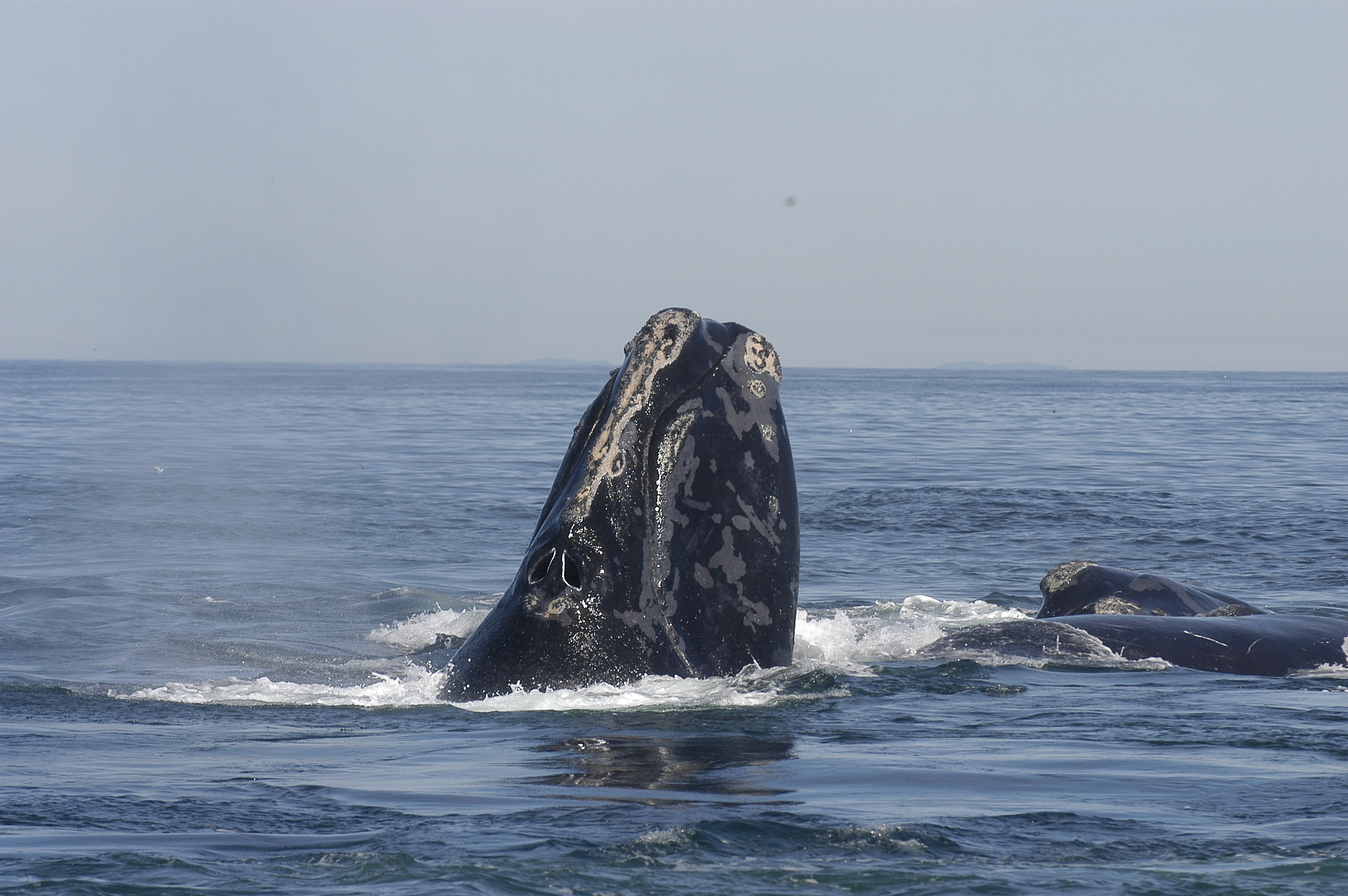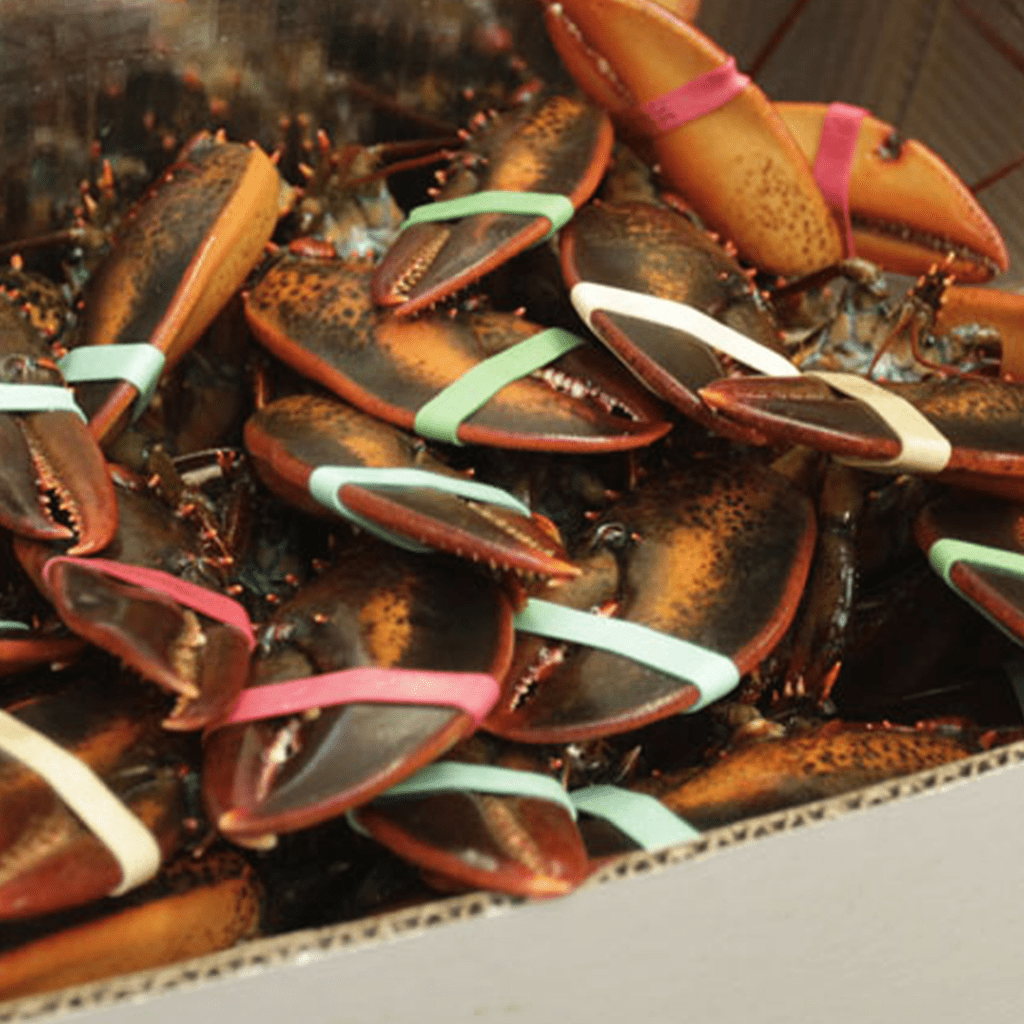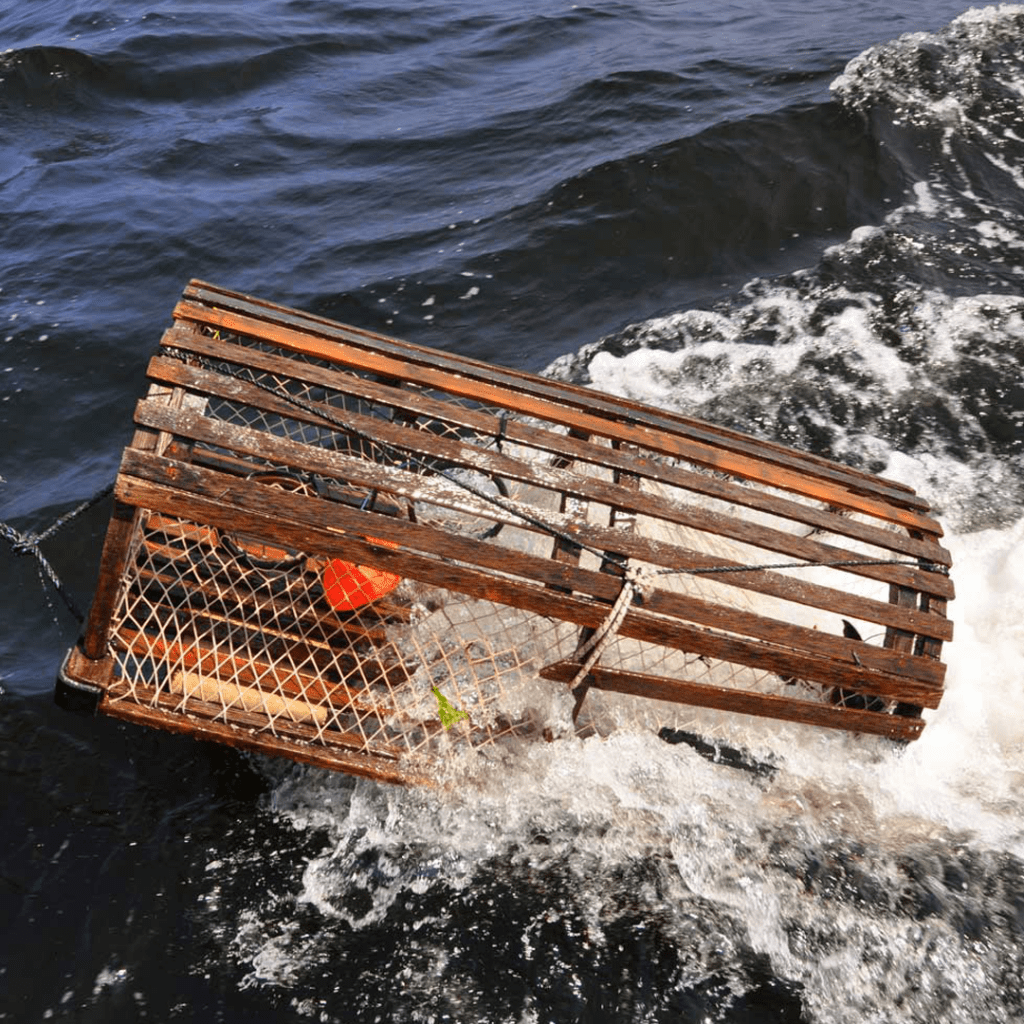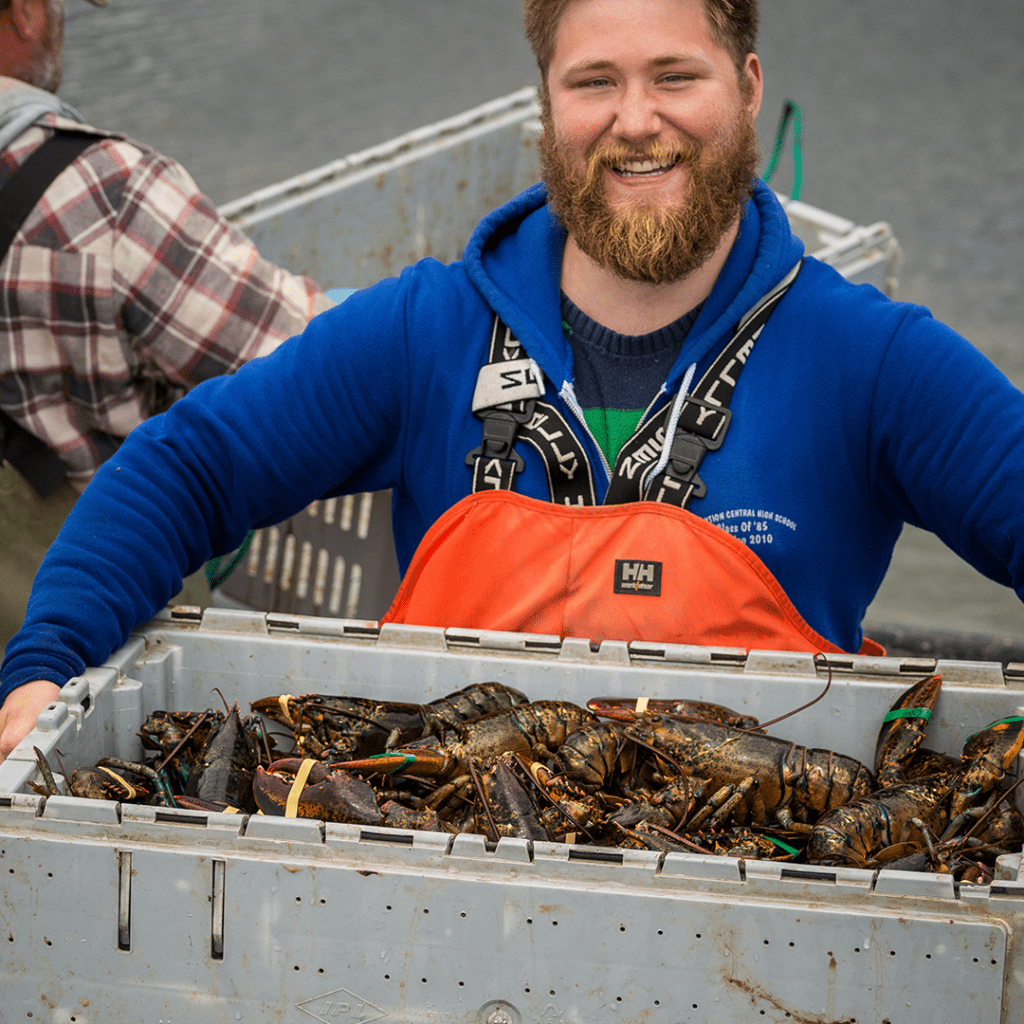Canadian Lobster: Committed to protecting North Atlantic Right Whales

The Canadian Lobster industry’s ongoing mitigation strategies as well as newly introduced regulations all help to mitigate the risk to the North Atlantic Right Whale (NARW) population. Since 2017 and with modifications every year, Canadian lobster sector stakeholders and regulators have led the way on protecting right whales with the most ambitious and far-reaching management measures in the world.

World Leading Preventative Mitigation Measures
Universal gear requirements and trap limits: No rope is permitted to float on the water’s surface after a lobster trap has been set. Harvesters in many fishing areas are also required to “trawl up,” or attach multiple sea floor traps to a single vertical rope . Coupled with the trap limit—all Canadian lobster boats are restricted to a maximum of 300 traps per boat—these measures limit the number of vertical lines in the water.
Gear traceability: All Canadian lobster harvesters abide by regulations that mandate 100% gear marking, using rope with unique colours for enhanced traceability of gear origin, down to country, fishery and precise fishing area.
Ghost gear reporting: Canada was among the first countries in the world to require lost gear reporting for all fisheries within 72 hours of discovery. Since the launch of our Ghost Gear program in 2020, Canada has already contributed to the removal of 7,560 units of lost gear and 155 km of rope, thereby reducing threats to marine mammals and vital ecosystems.
“Whale Safe” gear trials: Canada is also working with harvesters to implement low-breaking strength rope or links to facilitate whales’ self-release in the unlikely event that entanglements should occur, despite the extensive mitigation measures already in place.
Dynamic and Seasonal closure protocols: if a single NARW is detected visually or acoustically, dynamic closures will prohibit fishing in the nearby area for 15 days. In the Gulf of St. Lawrence, if a whale is detected between days 9-15 of the temporary closure, a season-long closure will be implemented until November 15th of the same year. These sightings are facilitated by ongoing aerial monitoring along with a whale hotline number for civilian and industry reports.
Defined seasons: in Canada, there are 41 defined lobster fishing areas, each with its own window of time that lobster harvesting is permitted. These time periods have historically limited contact with the NARW while preserving lobster stocks.
Speed restrictions and restricted areas: Mandatory speed limits for fishing boats are in place throughout much of the Gulf of St. Lawrence. There is also a full restriction for large vessels in the water off the Shediac Valley, where NARWs gather for feeding in the summer months.
For more information:
- Canadian Lobster Industry Mitigation Measures (Lobster Council of Canada)
- 2023 Mitigation Measures (Government of Canada Department of Fisheries and Oceans)
- 2023 Traffic Management Measures (Transport Canada)
- Fishing Area Closures to Protect NARW (Department of Fisheries and Oceans)
- Mitigation Measures by Year (Department of Fisheries and Oceans)



Learning and evolving
These far-reaching measures are continuously monitored and adapted based on the latest science and the evolving distribution of NARWs in our waters. All regulations are subject to daily oversight by Canada’s Department of Fisheries and Oceans and Transport Canada. The Canadian lobster sector and government of Canada understand the importance of this issue and continue to invest millions of dollars annually to reduce risk and potential harm to the endangered North Atlantic Right Whale.

More to explore



Our Industry

Lobster 101


